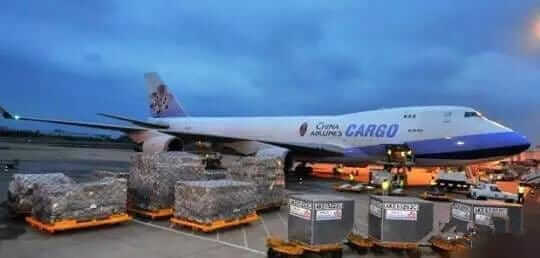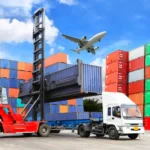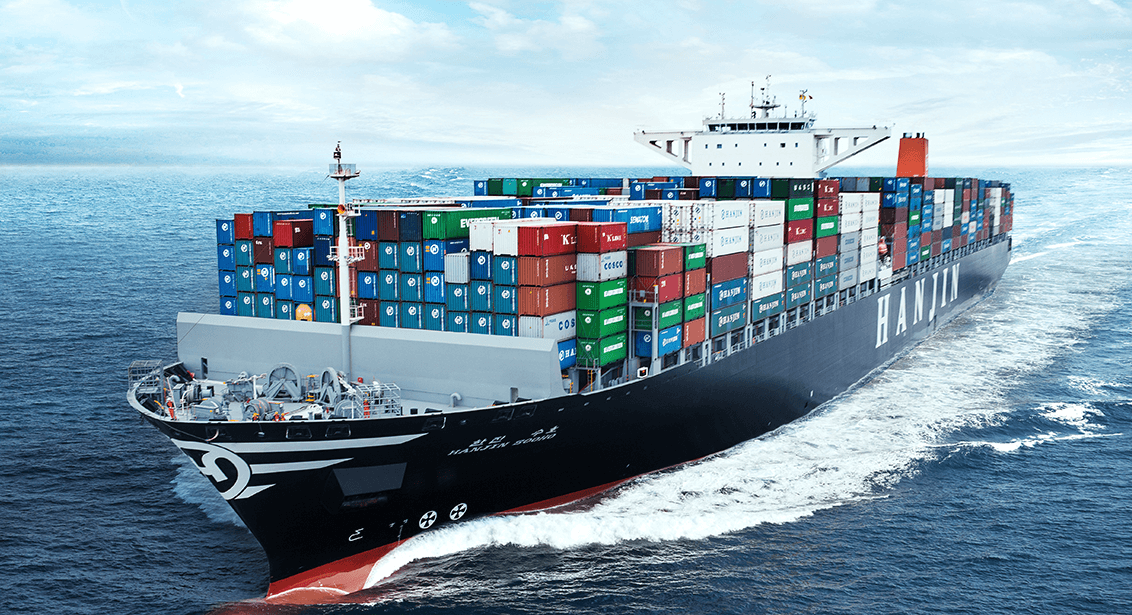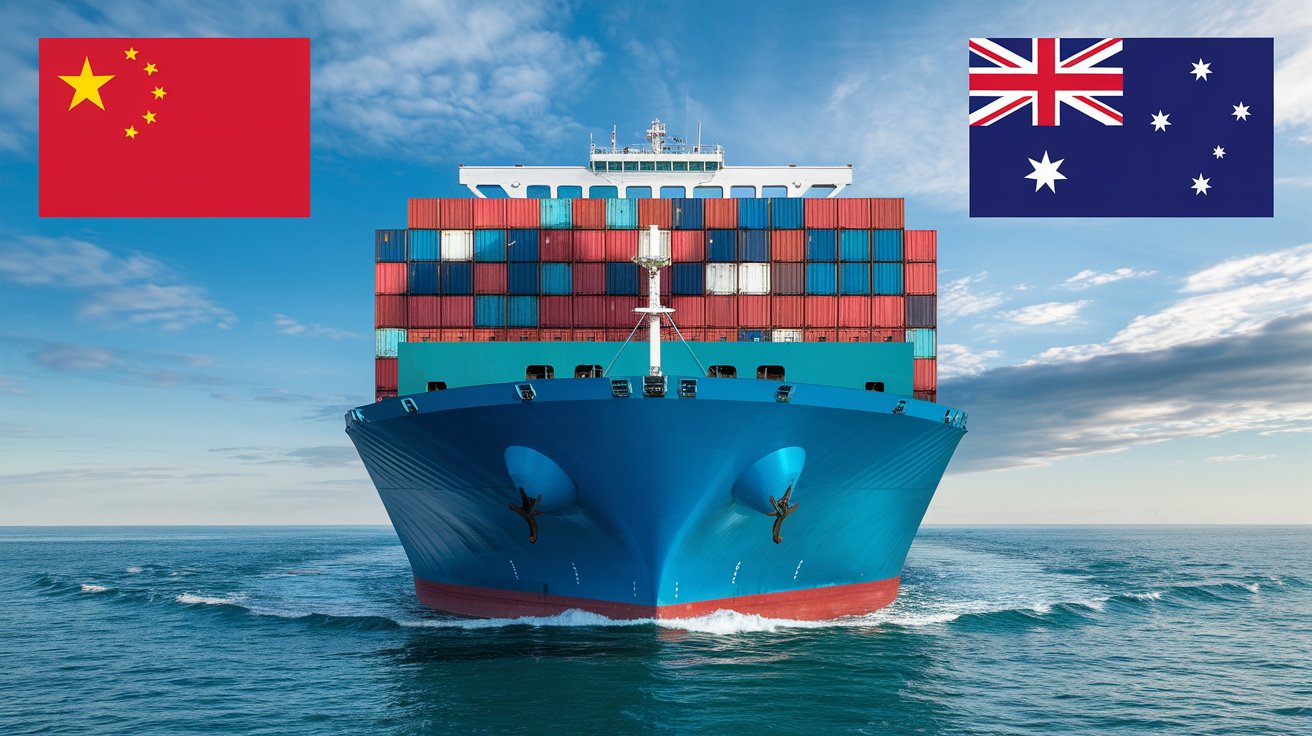In today’s globalized world, international trade has become a cornerstone of economic prosperity. As one of the world’s leading manufacturing hubs, China plays a pivotal role in this interconnected web of commerce. Among the various modes of transportation available, air shipping from China has emerged as a crucial and efficient method for businesses to transport goods across borders.
The Rise of Air Shipping
Air shipping has gained prominence for its speed, reliability, and global reach. China, with its rapidly growing economy and thriving manufacturing sector, has become a major player in the international air freight industry. This mode of transportation is particularly advantageous for time-sensitive goods, high-value items, and perishable commodities.

Advantages of Air Shipping from China:
Speed: Air shipping is renowned for its unparalleled speed. Goods can be transported from China to destinations worldwide in a matter of days, reducing transit times significantly compared to other modes of transportation.
Air shipping from China offers several advantages, making it a popular choice for businesses engaged in international trade. Here are some key benefits:
Speed:
Rapid Transit Times: Air shipping is renowned for its unparalleled speed. Goods can be transported from China to destinations worldwide in a matter of days, significantly reducing transit times compared to other modes of transportation like sea freight.
Time-Sensitive Shipments: This speed is particularly advantageous for time-sensitive goods, such as perishable items or products with short shelf lives. Businesses can meet tight deadlines and respond quickly to market demands.
Reliability:
Adherence to Schedules: Air cargo flights operate on strict schedules, providing a high level of reliability. This predictability is crucial for businesses that depend on timely delivery to maintain their supply chains and meet customer expectations.
Reduced Risk of Delays: Compared to other modes of transportation, air shipping is less susceptible to delays caused by factors like weather conditions or congested ports.
Global Reach:
Extensive Network: Air shipping connects China to virtually every corner of the globe. This extensive network allows businesses to reach international markets efficiently and facilitates the distribution of Chinese products worldwide.
Accessibility to Remote Areas: Air transport is especially valuable for reaching remote or landlocked regions where other transportation modes may be less practical.
Security:
Stringent Security Measures: Airports implement stringent security measures, ensuring the safety of goods during transit. This is particularly important for high-value items, sensitive materials, or products with specific security requirements.
Reduced Risk of Theft or Pilferage: The controlled and monitored environment of air shipping minimizes the risk of theft or pilferage compared to other transportation modes.
Flexibility:
Flexible Scheduling: Air shipping provides flexibility in terms of scheduling, with frequent flights to major destinations. This flexibility allows businesses to adapt quickly to changing market conditions and respond to urgent shipping needs.
Partial Shipments: Businesses have the option to send partial shipments via air, allowing for more flexibility in managing inventory levels and responding to customer demands.
Documentation and Customs Clearance:
Streamlined Customs Procedures: Air shipping often involves simpler and quicker customs clearance procedures compared to other modes. This helps in reducing paperwork and expediting the movement of goods across borders.
Streamlined customs procedures are a significant advantage of air shipping, contributing to the efficiency and speed of the transportation process. These streamlined procedures play a crucial role in facilitating the movement of goods across international borders. Here are key aspects related to streamlined customs procedures in the context of air shipping from China:
Faster Clearance Times:
Priority Handling: Air shipments often receive priority handling in customs due to the time-sensitive nature of air transport. This can result in faster clearance times, reducing the overall transit time for goods.
Simplified Documentation:
Electronic Processing: Many customs authorities have implemented electronic processing systems for air shipments. This allows for the submission and processing of documentation electronically, reducing the reliance on paper documents and expediting the clearance process.
Standardized Documentation: Air shipping often involves standardized documentation, making it easier for customs officials to review and process the paperwork efficiently.
Pre-Clearance Procedures:
Pre-Clearance Facilities: Some airports have pre-clearance facilities, allowing customs procedures to be conducted at the departure location. This minimizes delays upon arrival, as goods have already undergone necessary inspections and documentation checks.
Advance Information Submission: Airlines and freight forwarders can submit advance information about the cargo to customs authorities, enabling pre-clearance and smooth processing upon arrival.
Customs Cooperation Programs:
Customs Cooperation Agreements: Many countries have customs cooperation agreements with each other to streamline procedures for air shipments. These agreements may include mutual recognition of security measures, harmonized customs documentation, and cooperative efforts to enhance efficiency.
Customs Cooperation Agreements (CCAs) are bilateral or multilateral agreements between countries aimed at enhancing collaboration and coordination in customs-related matters. These agreements are designed to streamline customs procedures, improve efficiency, and foster international trade by reducing barriers and facilitating the smooth movement of goods across borders. Here are key aspects of Customs Cooperation Agreements:
Mutual Recognition of Customs Procedures:
CCAs often involve the mutual recognition of each country’s customs procedures. This recognition allows for a more standardized and harmonized approach to customs clearance, reducing the administrative burden on traders.
Harmonization of Documentation:
CCAs seek to harmonize and simplify customs documentation requirements. This includes standardizing the format and content of documents such as invoices, packing lists, and certificates of origin, making it easier for businesses to comply with customs regulations.
Information Sharing:
Customs Cooperation Agreements facilitate the exchange of information between customs authorities of participating countries. This information sharing can include details about shipments, risk assessments, and intelligence related to customs offenses.
Coordinated Border Management:
CCAs promote coordinated border management, encouraging collaboration between various border control agencies beyond customs. This integrated approach helps streamline procedures involving customs, immigration, quarantine, and other regulatory bodies.
Single Window Systems:
Some Customs Cooperation Agreements support the implementation of Single Window Systems. A Single Window allows traders to submit all required information and documentation to multiple government agencies through a single electronic platform, reducing duplication and speeding up clearance processes.
Advanced Cargo Information:
CCAs often encourage the submission of advanced cargo information to customs authorities. This allows for risk assessment and pre-clearance procedures, contributing to faster and more efficient customs clearance.
Capacity Building and Training:
Many Customs Cooperation Agreements include provisions for capacity building and training programs. These initiatives aim to enhance the skills and knowledge of customs officials, promoting the effective implementation of streamlined procedures.
Trusted Trader Programs:
CCAs may lead to the establishment of Trusted Trader Programs, where businesses with a proven track record of compliance and security practices receive certain benefits. These benefits can include expedited customs clearance and reduced inspections.
Dispute Resolution Mechanisms:
CCAs typically include mechanisms for resolving disputes that may arise between the customs authorities of participating countries. Having clear dispute resolution procedures helps maintain the integrity of the agreement and ensures a smooth working relationship.
International Standards Adherence:
Customs Cooperation Agreements may encourage countries to adhere to international standards set by organizations such as the World Customs Organization (WCO). Compliance with these standards promotes consistency and best practices in customs procedures.
Promotion of Trade Facilitation:
Ultimately, the primary goal of Customs Cooperation Agreements is to promote trade facilitation. By reducing bureaucratic hurdles and fostering collaboration, these agreements contribute to the efficient flow of goods and services across borders, benefiting businesses and economies.
Risk-based Inspections:
Targeted Inspections: Customs authorities often use risk-based assessment techniques to identify high-risk shipments. This allows for targeted inspections, focusing resources on potentially problematic shipments while expediting the clearance of low-risk cargo.
Trusted Trader Programs: Some countries offer trusted trader programs where businesses with a proven track record of compliance are granted certain privileges, such as reduced inspections and expedited customs clearance.
Automation and Technology:
Customs Management Systems: The use of advanced customs management systems and technology helps automate processes, reducing the likelihood of errors and expediting clearance. This includes electronic data interchange (EDI) systems for transmitting information between stakeholders.
Barcode and RFID Technology: The use of barcode and radio-frequency identification (RFID) technology in cargo handling and documentation can enhance the accuracy of customs procedures and contribute to faster processing.
Clear Communication Channels:
Communication with Stakeholders: Effective communication between customs authorities, airlines, freight forwarders, and other stakeholders is crucial for smooth customs procedures. Clear and open channels of communication help address any issues promptly, preventing unnecessary delays.
Real-time Tracking: Many air carriers offer real-time tracking services, providing visibility into the location and status of shipments. This transparency is valuable for businesses and helps in proactive management of logistics.
While air shipping comes with these advantages, it’s essential for businesses to carefully consider factors such as cost, the nature of the goods being transported, and the overall supply chain strategy to determine the most suitable mode of transportation for their specific needs.
Reliability: Air shipping offers a high level of reliability, as flights adhere to strict schedules. This predictability is crucial for businesses that depend on timely delivery to maintain their supply chains and meet customer demands.
Global Reach: Air shipping connects China to virtually every corner of the globe, enabling businesses to reach international markets efficiently. This extensive network enhances the accessibility of Chinese products worldwide.
Security: Airports implement stringent security measures, ensuring the safety of goods during transit. This is especially important for high-value items and sensitive materials that require extra protection.
Challenges in Air Shipping from China: While air shipping boasts numerous advantages, it is not without its challenges. Some of the key hurdles include:
Cost: Air shipping is generally more expensive than other modes of transportation, making it less economical for bulk or low-value shipments. Businesses must carefully weigh the benefits of speed against the higher costs.
Capacity Constraints: The limited cargo space on airplanes can pose challenges, particularly during peak seasons or global disruptions. Businesses must plan ahead to secure space for their shipments.
Environmental Impact: The environmental footprint of air shipping, including carbon emissions, has raised concerns. Efforts are being made to develop more sustainable practices, but the industry continues to grapple with its impact on the environment.
Logistics and Documentation: Navigating the complexities of air shipping from China requires a thorough understanding of logistics and documentation. Proper documentation, including invoices, packing lists, and customs declarations, is essential to ensure smooth customs clearance and adherence to international regulations.
Choosing the Right Freight Forwarder
Selecting a reliable and experienced freight forwarder is crucial for successful air shipping. Freight forwarders specialize in coordinating the transportation of goods and managing the various intricacies of international logistics. Businesses should carefully vet and choose a partner that aligns with their specific shipping needs.

Air shipping from China has become an integral part of the global supply chain, facilitating the swift movement of goods across borders. While it offers numerous advantages in terms of speed, reliability, and global reach, businesses must also navigate challenges such as cost considerations and environmental impact. With careful planning, strategic partnerships, and a solid understanding of logistics, businesses can harness the power of air shipping to propel their products to markets worldwide.





















 Afrikaans
Afrikaans Shqip
Shqip አማርኛ
አማርኛ العربية
العربية Հայերեն
Հայերեն Azərbaycan dili
Azərbaycan dili Euskara
Euskara Беларуская мова
Беларуская мова বাংলা
বাংলা Bosanski
Bosanski Български
Български Català
Català Cebuano
Cebuano Chichewa
Chichewa 简体中文
简体中文 繁體中文
繁體中文 Corsu
Corsu Hrvatski
Hrvatski Čeština
Čeština Dansk
Dansk Nederlands
Nederlands English
English Esperanto
Esperanto Eesti
Eesti Filipino
Filipino Suomi
Suomi Français
Français Galego
Galego ქართული
ქართული Deutsch
Deutsch Ελληνικά
Ελληνικά Kreyol ayisyen
Kreyol ayisyen Harshen Hausa
Harshen Hausa Ōlelo Hawaiʻi
Ōlelo Hawaiʻi עִבְרִית
עִבְרִית हिन्दी
हिन्दी Hmong
Hmong Magyar
Magyar Íslenska
Íslenska Igbo
Igbo Bahasa Indonesia
Bahasa Indonesia Gaeilge
Gaeilge Italiano
Italiano 日本語
日本語 Basa Jawa
Basa Jawa ಕನ್ನಡ
ಕನ್ನಡ Қазақ тілі
Қазақ тілі ភាសាខ្មែរ
ភាសាខ្មែរ 한국어
한국어 كوردی
كوردی Кыргызча
Кыргызча ພາສາລາວ
ພາສາລາວ Latin
Latin Latviešu valoda
Latviešu valoda Lietuvių kalba
Lietuvių kalba Lëtzebuergesch
Lëtzebuergesch Македонски јазик
Македонски јазик Malagasy
Malagasy Bahasa Melayu
Bahasa Melayu മലയാളം
മലയാളം Maltese
Maltese Te Reo Māori
Te Reo Māori मराठी
मराठी Монгол
Монгол ဗမာစာ
ဗမာစာ नेपाली
नेपाली Norsk bokmål
Norsk bokmål پښتو
پښتو فارسی
فارسی Polski
Polski Português
Português ਪੰਜਾਬੀ
ਪੰਜਾਬੀ Română
Română Русский
Русский Samoan
Samoan Gàidhlig
Gàidhlig Српски језик
Српски језик Sesotho
Sesotho Shona
Shona سنڌي
سنڌي සිංහල
සිංහල Slovenčina
Slovenčina Slovenščina
Slovenščina Afsoomaali
Afsoomaali Español
Español Basa Sunda
Basa Sunda Kiswahili
Kiswahili Svenska
Svenska Тоҷикӣ
Тоҷикӣ தமிழ்
தமிழ் తెలుగు
తెలుగు ไทย
ไทย Türkçe
Türkçe Українська
Українська اردو
اردو O‘zbekcha
O‘zbekcha Tiếng Việt
Tiếng Việt Cymraeg
Cymraeg יידיש
יידיש Yorùbá
Yorùbá Zulu
Zulu